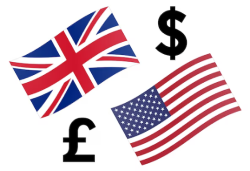
Flexity Analysis for GBPUSD
Forecast Overall(Short-Term, Long-Term): ST=Probably Down LT=Probably Down
Forecast Methods(Short-Term, Long-Term):
[Method0] ST=Same LT=Up
[Method1] ST=Down LT=Down
[Method2] ST=Down LT=Down
FlexityIndicator Analysis Method(0)
Short-Term: Based on the information provided, there is no explicit indication whether the GBP/USD price is expected to rise, fall, or remain stable in the short term. The context mentions trading forecasts and weekly analyses but does not provide specific price predictions or reasons behind them. To get a precise answer, you would need to access the specific posts mentioned for detailed insights. Long-Term: The price of GBP/USD is expected to go **up** in the long term. This conclusion is based on the bullish trading forecasts, potential support from UK retail trade data, and a strategic approach that encourages buying at lower levels with the expectation of rising prices. While there are bearish considerations, the overall sentiment leans towards an upward trend due to positive technical and fundamental indicators.
Result: [Method0] ST=Same LT=Up
FlexityIndicator Analysis Method(1)
Short-Term: Based on the analysis of various factors influencing the GBPUSD exchange rate, the short-term outlook suggests that the price is expected to **go down**. This conclusion is driven by the anticipated strengthening of the US dollar due to a strong US market performance and the potential impact of emerging market instability and Fed leadership changes. While there are bullish indicators from investment banks, other factors like UK borrowing levels and services sector weakness may contribute to a weakening of GBP against USD in the near term. Long-Term: **Answer:** The price for GBPUSD is expected to go down in the long term. This conclusion is drawn from several factors: a forecast of weakness in GBP/EUR by Goldman Sachs, which may affect GBPUSD; cautious market sentiment due to concerns over the UK economy; weak economic indicators such as the services sector dip and PMI figures, which have already impacted the pound-to-euro rate; and broader market dynamics indicating a risk-on environment that could strengthen the US dollar, putting downward pressure on GBPUSD.
Result: [Method1] ST=Down LT=Down
FlexityIndicator Analysis Method(2)
Short-Term: **Answer:** Based on the analysis of the provided information, the GBPUSD exchange rate is expected to **go down** in the short term. The key factors contributing to this expectation include: 1. The GBP's recent weakening from $1.358 to $1.347 following weaker-than-expected UK PMI data. 2. A shift in economic focus towards growth concerns, indicating potential challenges for the British economy. 3. Weak retail sales data suggesting a slowdown in consumer spending. 4. A bearish outlook due to weaker UK economic indicators. While there is some optimism from global factors like the US-Japan trade deal, the domestic economic weaknesses are considered more significant in driving the short-term outlook. Long-Term: **Conclusion:** Based on the analysis of the provided context, the long-term expectation for the GBPUSD exchange rate is that it will **go down**. This outlook is driven by several factors: 1. **Weaker UK Economic Data**: The weaker-than-expected PMI data indicates a potential economic slowdown in the UK, which could lead to speculation about Bank of England interest rate cuts. Lower interest rates can make the British Pound less attractive, causing it to weaken against the USD. 2. **Safe Haven Dynamics**: Investors may turn to the US Dollar as a safe haven in response to global economic concerns, further strengthening the USD and weakening the GBP. While positive market sentiment from international trade agreements might offer some support, the dominant factors suggest that downward pressures on the GBPUSD rate are likely to prevail in the long term.
Result: [Method2] ST=Down LT=Down
